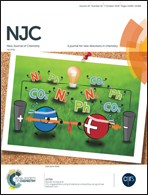Biodegradable spirulina extract/polycaprolactone porous scaffolds
Abstract
Hydrophilicity, pores with interconnected structures, and degradability are important properties of tissue engineering scaffolds. The degradability after introducing spirulina extract (SP-E) to polycaprolactone (PCL) via particulate leaching to obtain SP-E/PCL scaffolds was characterized on the basis of their porosity, hydrophilicity, water absorption capacity, and degradability. Microscopy analysis showed that the pore sizes were in the range of 250–300 μm including small interconnected pores within large pores because of some SP-E leaching out during the fabrication process. The hydrophilicity of the SP-E/PCL scaffold was considerably enhanced by introducing SP-E. The water contact angles of the SP-E/PCL scaffold decreased from 120° to 65° at 2 s followed by further decrease to 0° at 7 s. The water absorption capacity increased from 2.5 to 8.5 times the original weight. SP-E/PCL scaffolds quickly degraded with increasing amounts of SP-E, and the percentage of weight loss increased from 2.2% (PCL scaffold) to 29.2% (20 wt% SP-E/PCL scaffold) after immersion in PBS for 25 d because of the co-degradation of SP-E and PCL. The molecular weight of SP-E/PCL-20 changed slightly after only 28 d degradation. The hydroxyl groups of the degraded SP-E/PCL-20 specimen were formed after 28 d. Moreover, the number of micropores formed on the surface of the scaffold after immersion in PBS for 25 d increased with increasing amounts of SP-E. Using SP-E as a secondary phase improved porosity, interconnectivity, hydrophilicity, and water absorption capacity and caused accelerated degradation between SP-E and PCL. These findings suggest that SP-E/PCL scaffolds have potential applications in tissue engineering.



 Please wait while we load your content...
Please wait while we load your content...